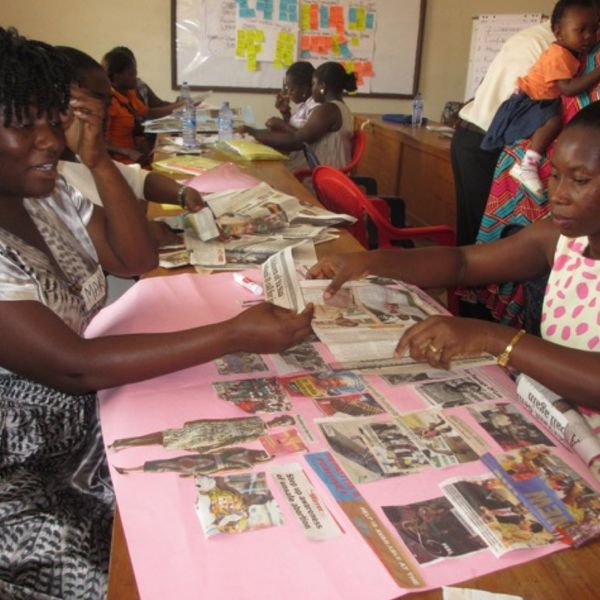
Using Girls’ Clubs to Improve Literacy in the Ashanti Region
Female literacy is one of the key interventions pursued by Women’s Health to Wealth (WHW) to help transform the lives of women and girls in our areas of operation in Ghana’s Ashanti region.
Currently, middle school (here, junior high) is the highest level of educational attainment for fully half of the girls in WHW’s area, which is centered in Ashanti’s capital city, Kumasi, and includes the surrounding periurban communities. This incomplete education adversely affects the girls’ potential earnings, as they end up with jobs that keep them trapped in the lowest wealth quintiles, thereby perpetuating the poverty cycle and its respective undesirable effects on the health of women and their eventual dependants.
As a strategy for promoting girls’ education up to senior high school, WHW decided to expand our Girls’ Clubs program from Kumasi schools to junior high schools in severely depressed communities in the seven districts bordering the city that have been noted for low enrollments of girls in both junior and senior high. The Clubs provide a safe place for girls to establish their identities and develop the emotional strength to interface successfully with their community.
At the invitation of the districts’ education teams, WHW started preparatory activities in March 2015 by holding meetings in those districts where we were already working to improve the health of the area’s many market women by offering health screenings at our regular mobile clinics. Our meetings concluded with the enthusiastic district teams’ selecting the communities and school facilitators who would participate in the program and determining specific timelines for training the facilitators and starting the programme.
Training of Facilitators:
From May 19-21, 2015, WHW led a three-day residential training workshop for the 19 schools-based facilitators and three District Girl Child Coordinators that covered in some depth those issues adversely affecting girls’ education and ways to address them through the Girls’ Clubs.
The objectives of the training were as follows:
-
- To identify and explore factors adversely affecting the education of girls in our communities,
- To explore with facilitators some possible strategies to address the issues raised;
- To orient facilitators on WHW
- To review and train facilitators on the WHW Girls’ Club draft curriculum
- To finalise timelines for the start of Girls’ Clubs in their schools.
At the end of the workshop, the facilitators’ evaluations made clear that they felt strongly empowered by the training and were extremely eager to start the Clubs in their respective schools.
The facilitators then set about encouraging the Grade 7 girls in their schools to register for Club membership and decided to hold the first session during the week of June 8, 2015. In two communities, registration was opened up to girls in Grades 5 and 6, as WHW was told that these girls kept dropping out at grade 5, due to unintended pregnancies. It was hoped that, with a safe space to come to, together with other girls and facilitators, such pregnancies might be avoided, going forward.
Uses of Technology:
During the three-day facilitators’ workshop, WHW staff helped them create Internet accounts on their smartphones. The “WhatsApp” application was used to develop a page that could facilitate communication between WHW and facilitators, as facilitators deemed this application as more user-friendly than getting on the Internet.
The WhatsApp page has greatly influenced communication and feedback between WHW and participating schools by reducing costs and speeding up information transfer between parties. Facilitators use the page mainly to report back to WHW on their weekly meetings, while WHW uses it to share information and to provide feedback to facilitators.
Next Steps:
We anticipate a surge in membership in the existing Clubs at the start of the next academic season. However, we intend to keep the numbers no higher than 30 per Club, in order to give the facilitators enough time to spend with each girl.
WHW’s goal is to expand the Girls’ Clubs to six new junior high schools before the close of 2015.
Interested in continuing the conversation about Education?